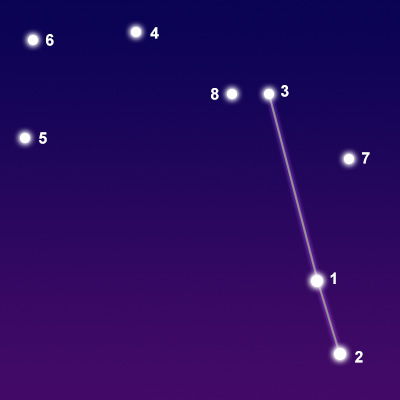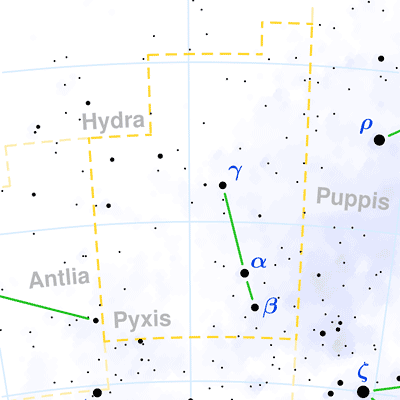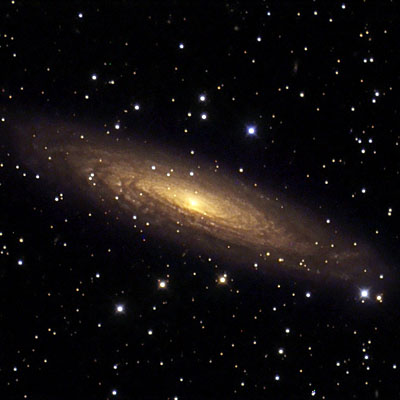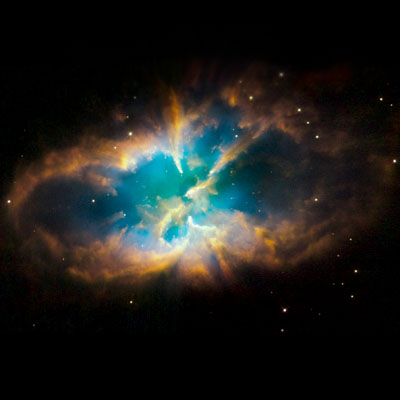Pronunciation:
(PIK-sis)Abbreviation:
PyxGenitive:
PyxidisRight Ascension:
9 hoursDeclination:
-30 degreesArea in Square Degrees:
221Crosses Meridian:
9 PM, March 15Visible Between Latitudes:
50 and -90 degreesThe constellation Pyxis, the compass, is located in the southern hemisphere of the sky. It is completely visible at latitudes south of 530 degrees from January through March. It is a small constellation covering 221 square degrees of the sky. It ranks 65th in size among the 88 constellations in the night sky. It is bordered by Hydra to the north, Puppis to the west, Vela to the south, and Antlia to the east.
Pyxis is one of 14 southern constellations created by the French astronomer Abbé Nicolas Louis de Lacaille in the 1752 during his trip to the Cape of Good Hope to study the southern sky. He named it la Boussole. It was later Latinized to Pixis Nautica and eventually shortened to Pyxis. It represents a magnetic compass used by navigators. It should not be confused with Circinus, which represents a draftsman’s drawing compass. It lies near the three constellations that were once part of a larger group known as Argo Navis, the ship of Jason and the Argonauts. The four main stars of Pyxis were once part of the ship’s mast. In 1844 English astronomer John Herschel suggested renaming Pyxis as Malus, the Mast, but the new name was never accepted.

points of interest below © Sea and Sky

© Torsten Bronger CC BY-SA 3.0
Beta Pyxidis
Gamma Pyxidis
Kappa Pyxidis
Lambda Pyxidis
Theta Pyxidis
Zeta Pyxidis
Delta Pyxidis
N/A
N/A
N/A
N/A
N/A
N/A
N/A
Yellow Supergiant Star
Orange Giant Star
Multiple Star System
Yellow Giant Star
Red Giant Star
Multiple Star System
Multiple Star System
3.95
4.03
4.62
4.71
4.72
4.86
4.87
Pyxis is composed of very dim stars and contains no stars brighter than magnitude 3. The brightest star in the constellation is Alpha Pyxidis with a visual magnitude of only 3.68. It is a blue giant star located approximately 880 light years from earth. The second brightest star is Beta Pyxidis with a magnitude of 3.95. It is a yellow supergiant star about 420 light years distant from the Sun. Gamma Pyxidis is the third brightest star with a magnitude of 4.03. It is an orange giant star that lies 209 light years from our solar system.
Pyxis contains no Messier objects but does contain a few interesting deep-sky objects. NGC 2818 is a planetary nebula that was created when a dying star ejected its outer layers of gas into space. NGC 2613 is a barred spiral galaxy seen almost edge-on from our line of sight. The Pyxis Globular Cluster is a globular star cluster that contains thousands of individual stars. It is one of the most distant globular clusters from the center of our Milky Way galaxy. NGC 2627 is an open cluster of about 40 stars. These objects are very dim and can only be seen in large telescopes.


the Hubble Space Telescope



